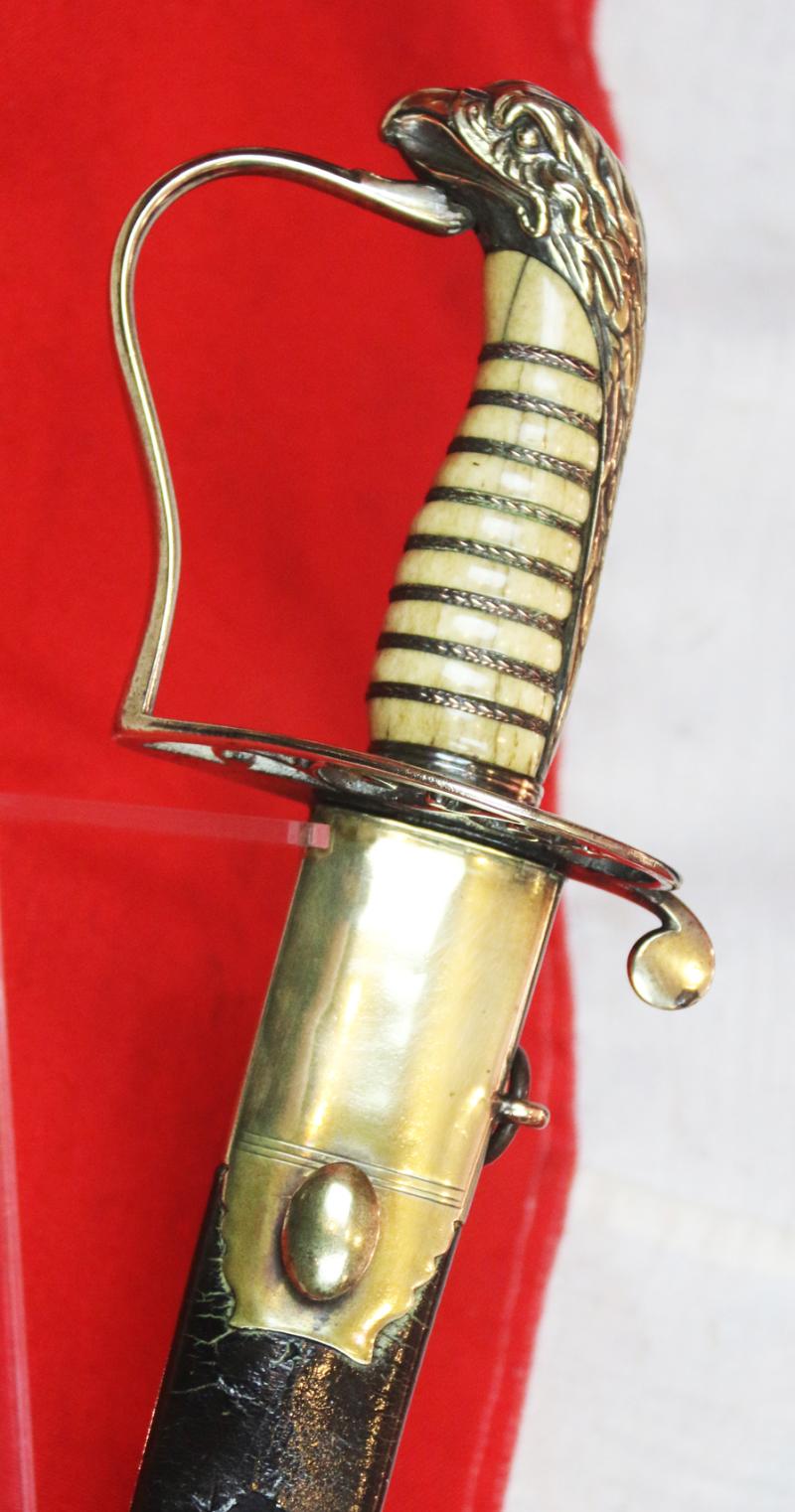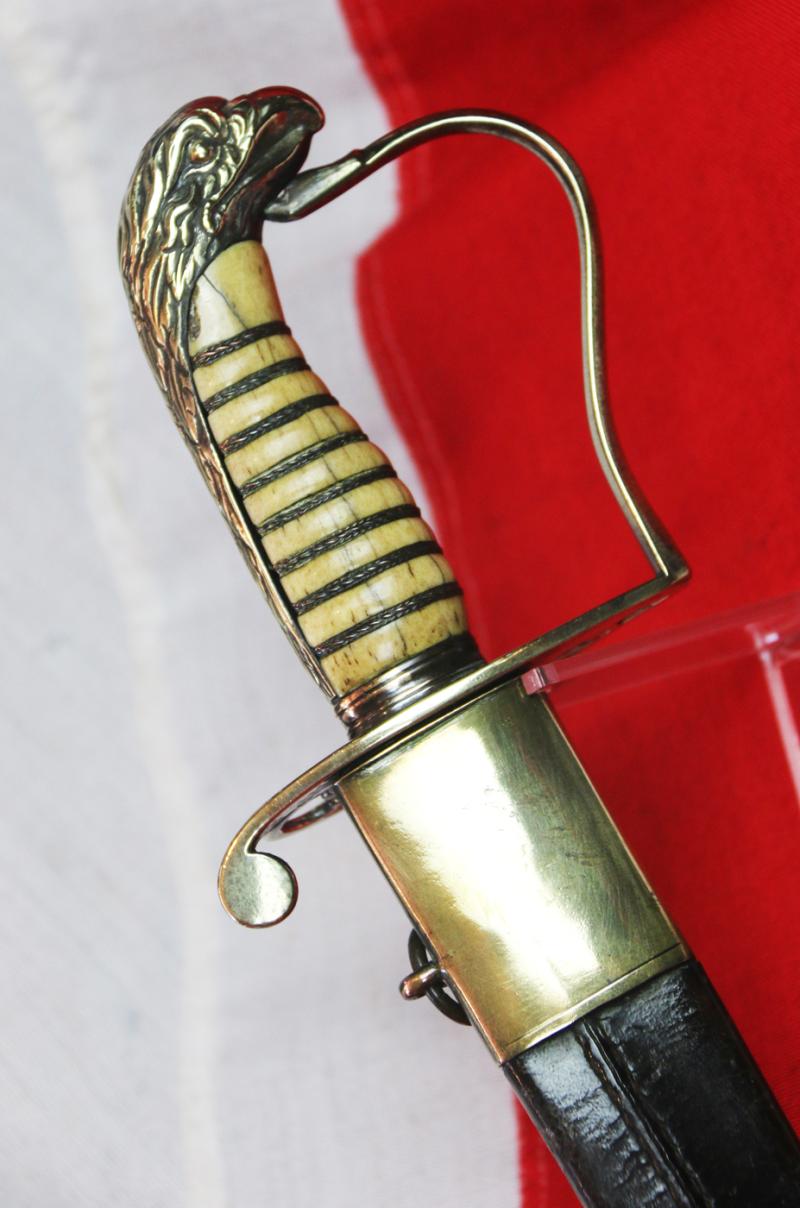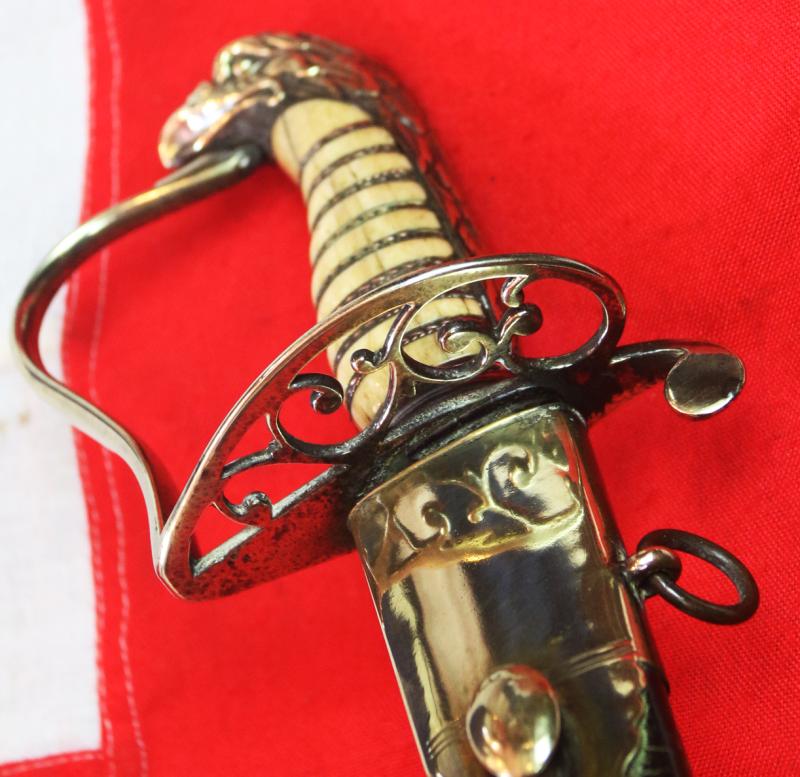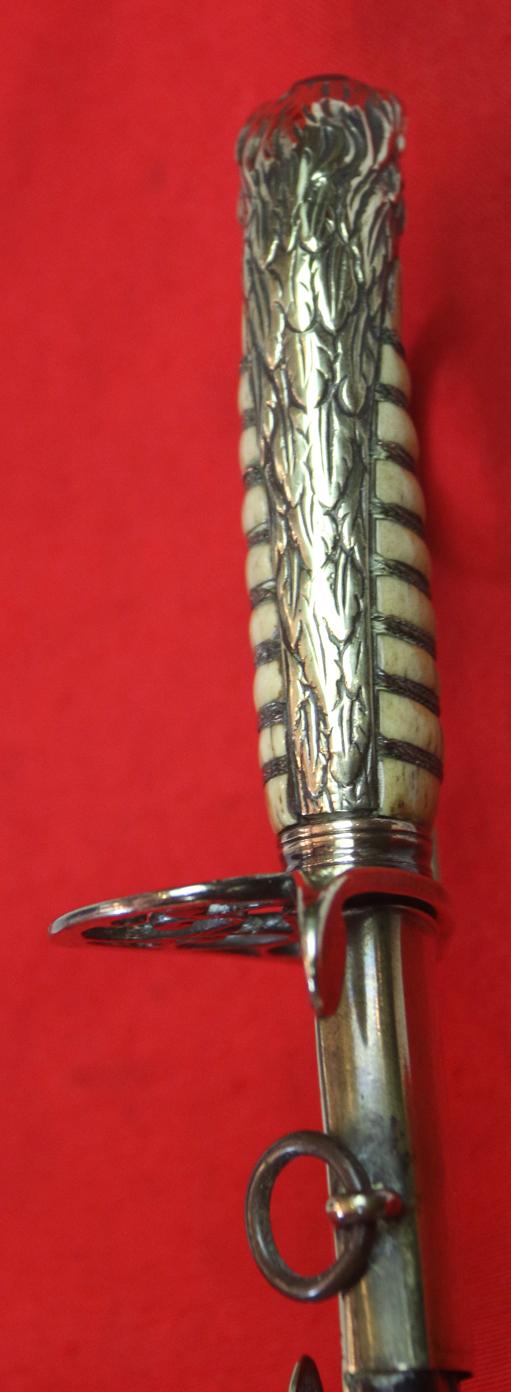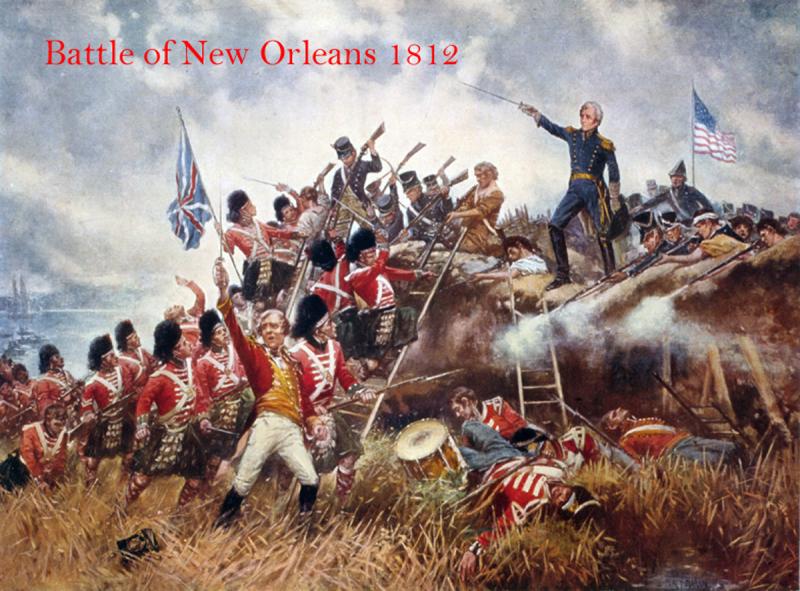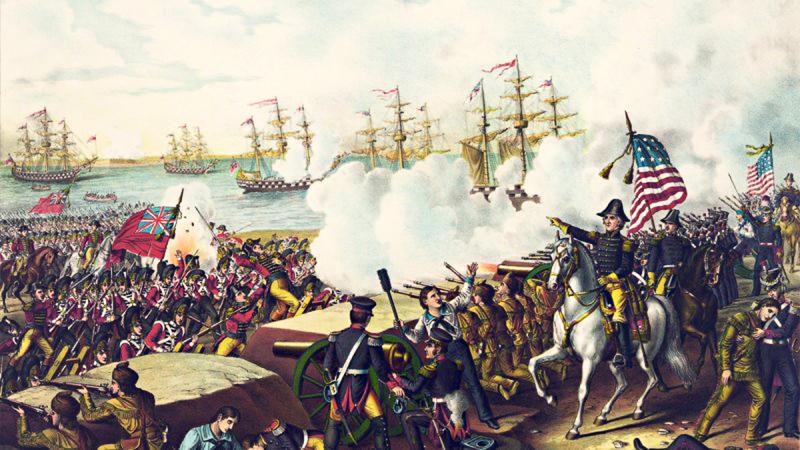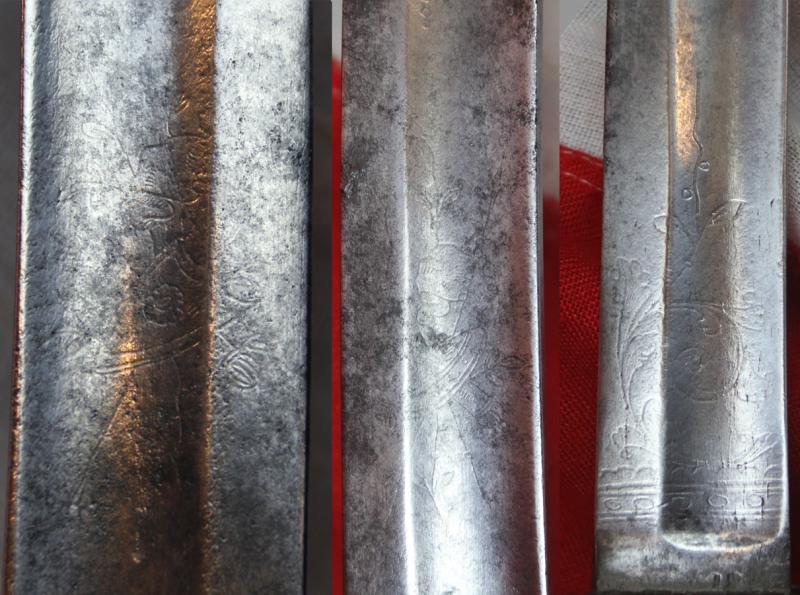A Very Fine & Rare, Signally Beautiful, Anglo-American War of 1812, 'Eagle Head' & Scroll Fretted Hilt, American Officer's Sabre. In Great Condition.
It was quite extraordinary, but we acquired a pair of these fabulous and very rare American eagle head pommel and scroll fretted hilted sabres, that have been together since the war, possibly owned by brothers that served, but naturally, officer's swords were never sold as pairs, or indeed used as such, but, none the less, they have been together for almost 200 years. We are, however, selling them individually.
Eagle head pommel with fully feathered back strap, in brass, with scroll fretted knuckle guard, and carved bone grip. Almost all the deluxe grade American officer’s sabres had the expensive alternative option of a carved bone hilt, as opposed to carved ivory, as enjoyed by their British counterparts, as the new nation of America lost all its access to ivory after its split from being part of the British colonial forces. Another one of the long list of negative consequences resulting from the revolution of 1776. It has an engraved bright polished blade, and its original brass mounted leather scabbard, with both twin ring belt strap supports, and an alternative wear option of a frog mount stud. Overall in excellent condition, with usual aged blade etching surface wear.
Used in the War of 1812 period, and a very nice example of these very fine swords,For Canadians, historically, the War of 1812 was the successful defence of a small colony against attack by a much larger neighbour.
Canadians endured repeated invasions and occasional occupations, but each invasion ultimately ended with an American withdrawal. The Royal Navy and British Army supported by Canadian regulars, Canadian militia, and First Peoples warriors, successfully defended Canada. Isaac Brock, Charles de Salaberry, Laura Secord, and Tecumseh became, and remain, iconic Canadian figures. The successful defence of Canada allowed British North America to evolve into an independent transcontinental country.
The War of 1812 was fought between the United States of America and Great Britain and its colonies, Upper and Lower Canada and Nova Scotia, from 1812 to 1815 on land and sea. The Americans declared war on Britain on June 18, 1812, for a combination of reasons, outrage at the impressment (seizure) of thousands of American sailors, frustration at British restraints on neutral trade while Britain warred with France, and anger at British support for native attacks along the frontier which conflicted with American expansion and settlement into the Old Northwest. The war started poorly for the Americans as their attempts to invade Canada were repeatedly repulsed; later in the war, American land forces proved more effective. The Royal Navy lost some early single-ship battles but eventually their numbers told and the naval blockade of the eastern seaboard ruined American commerce, and led to extreme dissatisfaction in New England. Following the American raid and burning of York (now Toronto), the British raided the Chesapeake Bay area and burned parts of Washington D.C. but were repulsed at Baltimore and withdrew. The Americans gained naval control of Lake Erie and Lake Champlain, preventing the planned British invasion of New York. The Americans destroyed the power of the native people of the Northwest and Southeast. With the defeat of Napoleon in 1814, and the stalemate on the battlefields, both nations agreed to a peace that left the prewar boundaries intact.
Code: 25299
1595.00 GBP



